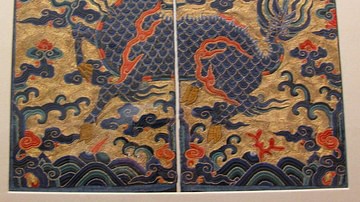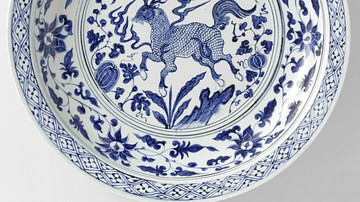Illustration
Kirin (Qilin), bronze statue at the Summer Palace in Beijing, China.
Here, the qilin has a dragon-like head with two horns, cloven hooves, and fire emanating from its chunky, scaled body. Throughout history, the qilin can be found in Chinese literature, art, and accounts of day-to-day life. As one of the Four Auspicious Beasts in Chinese mythology – alongside the dragon, phoenix, and tortoise – the qilin also embodies prosperity and longevity and has a heavenly status.
References to the qilin date back to ancient Chinese texts, where this revered creature is regarded as a sign of good fortune and an indicator of a virtuous ruler. Its association with the philosopher Confucius (l. c. 551 to c. 479 BCE) underscores its significance as an auspicious symbol. Qilin imagery was favoured across various Chinese dynasties, and its popularity extends across other Asian countries, including Japan, Korea, and Vietnam.
Cite This Work
APA Style
Sanctu. (2024, May 21). Kirin (Qilin). World History Encyclopedia. Retrieved from https://www.worldhistory.org/image/18959/kirin-qilin/
Chicago Style
Sanctu. "Kirin (Qilin)." World History Encyclopedia. Last modified May 21, 2024. https://www.worldhistory.org/image/18959/kirin-qilin/.
MLA Style
Sanctu. "Kirin (Qilin)." World History Encyclopedia. World History Encyclopedia, 21 May 2024. Web. 29 Mar 2025.







